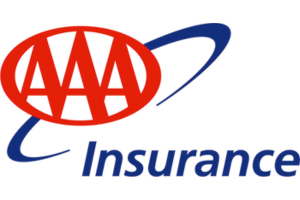Best Michigan SR-22 Insurance in 2026
What are Michigan SR-22 requirements?
Michigan is one of the most expensive states in the country for car insurance. If you commit driving violations and get your license suspended, you can expect even higher rates. In most states in the U.S., if you commit certain driving violations, you’re required to file an SR-22 with the state. An SR22 is a form of financial responsibility that proves to your state that you have at least the minimum liability insurance coverage required of you. However, Michigan doesn’t have a specific SR22 requirement, rather it has other requirements and penalties drivers can face.
Michigan has a financial responsibility law rather than an SR22 insurance requirement. This law requires all drivers to have car insurance with at least the minimum car insurance coverage.
There are two types of financial responsibility insurance options in Michigan. You can have one or the other, or both, depending on your needs. The two options are:
- Owner’s: Insures any vehicle registered in your name
- Operator’s: Insures you in any vehicle not registered in your name.
If you're required to prove financial responsibility, you can purchase one or both depending on if you want to insure any motor vehicle in your name or only you. In both cases, you will need to keep the SR-22 form for a minimum of three years. Additionally, there is an Operator's-Owner's Certificate Insurance which covers financial responsibility for all vehicles the driver owns or does not own (also called non-owner car insurance). The type of SR-22 coverage you choose depends on your circumstances and whether or not you own a vehicle.
For states that require an SR-22 form, it means the driver committed a major driving violation and has been required by their state or court to file it. The SR-22 insurance form is proof of insurance and it guarantees to the state that you have the minimum amount of insurance coverages required of you and it allows you to drive in the state.
In Michigan, the Secretary of Service may revoke a person's driving privilege for a number of reasons.
A common reason drivers may need SR22 insurance in states with an SR22 requirement is because they were caught driving without car insurance. In Michigan, there are penalties for driving without insurance or without at least the minimum required amount of insurance. If you get into an at-fault accident without auto insurance, injuring another party and they sue you, you may have a financial responsibility judgement made against you. If you can’t pay for the judgement, your license will be suspended.
In order to get your license reinstated after a drivers license suspension due to a financial responsibility judgement, you’ll need to apply for a financial responsibility restricted drivers license, which limits you to only driving the vehicle specified on the license.
To find the right insurance provider for you, it's important to shop around and compare rates from several insurance carriers
Start comparison shopping for affordable auto insurance rates using our online tool. Just enter your ZIP code to get started.
What are the SR-22 insurance limits in Michigan?
While SR-22 insurance isn’t required in Michigan, all drivers are required to have at least the minimum amount of insurance coverage in order to legally drive. All Michigan drivers must have at least the following coverages:
- Liability:
- $20,000 bodily injury per person
- $40,000 bodily injury per accident
- $10,000 property damage per accident
- Personal Injury Protection (PIP):
- $1 million per accident
Failure to maintain the appropriate coverage can lead to a civil lawsuit and you could be personally liable. You could also face criminal conviction resulting in fines, or one year of jail time.
Who needs SR-22 insurance in Michigan?
Even though Michigan does not require its drivers to have SR22 insurance after certain convictions, if you’re a driver in Michigan and you’re moving to a state that requires SR-22 insurance, you may need SR22 insurance in your new state. SR22 insurance is required in a few scenarios in order for you to get your license reinstated. SR-22s are required after you’ve committed certain violations of the law. You may even be required to have an SR-22 if you’ve had a series of small violations within a short span of time. You could need SR22 insurance for the following reasons:
- Conviction for driving under the influence (DUI or DWI)
- Driving without car insurance
- Driving with a revoked or suspended license
- Having repeated traffic violations in a certain amount of time, including speeding tickets
- Numerous at-fault accidents
- A fatal at-fault accident or one that results in injuries
- Reckless driving or dangerous driving
- Assignment from a court order
- Failure to pay fines from tickets
- Refused consent to breathalyzer or blood alcohol test
If you’re moving to a new state and need to get SR-22 coverage, you’ll need to get SR22 insurance from an auto insurance company that offers SR22 insurance in your new state. The form will need to be filed with your new state rather than with Michigan.
How are Michigan SR-22 insurance rates calculated?
One of the most common reasons drivers need SR22 insurance is because of a DUI. While you won’t need SR22 insurance in Michigan if you’ve been arrested or convicted of a DUI, your car insurance rates may still be affected. If you’ve had a DUI, you’ll be considered a high-risk or non-standard driver. On average, drivers in Michigan with one DUI pay $6,912, which is 171.2 percent higher than standard drivers with a clean record. In the table below, you can view average insurance rates for drivers in Michigan who’ve been convicted of a DUI.
| Company | Car insurance rate |
|---|---|
| Progressive | $2,017 |
| USAA* | $2,335 |
| Nationwide | $2,550 |
| Auto-Owners | $3,225 |
| Farmers | $3,258 |
| State Farm | $5,324 |
| The Hanover Insurance Group | $5,652 |
| Geico | $6,473 |
| AAA | $8,250 |
| Travelers | $9,229 |
| Liberty Mutual | $14,023 |
| Allstate | $15,418 |
*USAA is only available to active and former military members and their families.
These rates are based on a 35-year-old single adult with one driver and one vehicle on a policy. The car used was a 2015 Toyota Highlander LEs. Full coverage was used with 100/300/50 limits and a $500 collision and comprehensive deductible. The driver had 1 DUI on their record. The rates displayed should only be used for comparative purposes as individual rates for high-risk insurance in Michigan will differ. Rate data is provided by Quadrant Information Services.
How to get SR-22 insurance in Michigan?
While you may be considered a high-risk driver in Michigan after you’ve committed a driving violation, it won’t require you to have SR22 insurance. It may result in your car insurance rates increasing, though. If you’re considered a high-risk driver, it may be a good idea to shop for a new car insurance company in Michigan.
Use the table at the top of this page to find all the car insurance companies that offer high-risk insurance in Michigan with a minimum of 25 reviews. If you want to see which companies’ customers say are the best car insurance companies for SR22 insurance in Michigan, sort the table by highest rated. You can sort through companies and find the ones you want to get quotes from. To get quotes, click on the orange “Click for quote” button next to the company, call the number available, or visit the company’s website.
If you want to read customer reviews of the company, click the company name in the table and you will be directed to the company’s profile page containing information about the company and reviews.
Are there any SR-22 fees in Michigan?
In states that require SR22 insurance, drivers may have to pay a filing fee to their insurance company in order to file the SR22 form. This insurance filing fee typically ranges from $15 to $30. While you won’t need to pay that fee in Michigan, you may have to pay other fees if you’ve committed a driving violation. The standard reinstatement fee in Michigan to get your license back is $125. The fee can vary based on your violation.
How are car insurance rates calculated?
When searching and comparing car insurance quotes, it can be frustrating trying to understand how your insurance rates are calculated. While there is no exact formula that each car insurance company uses when providing you with a quote, there are many factors that do contribute to the price you pay for your insurance. Among the factors that car insurers consider are:
- Your driving record
- How much you drive
- Location
- Age
- Marital status
- Gender
- Your car’s make, model and year
- Your credit history (in some states)
- Amount of car insurance coverage (required coverage and optional add-ons, such as collision and comprehensive)
One of the biggest misunderstandings when it comes to insurance rates is that the history of drivers in your area also contributes to how much you pay. For instance, even if you go two years without an accident, if there were a lot of accidents near you recently, your rates might still go up. Why is that the case?
Insurance companies disperse risk across all policyholders so that when it comes time to pay a claim, they have enough money to pay out. But imagine a scenario where they only raised rates for drivers with an auto accident. For drivers who had an expensive claim, drivers simply wouldn't be able to afford the raised rates that are based on how much their insurer had to pay after an accident. So instead, insurance companies slightly increase rates across the board to offset the insurance costs, though of course, the at-fault driver may see a larger increase.
How much car insurance do I need?
You certainly don’t want to be underinsured or uninsured while staring at a claim after a car accident or other damage to your car. But at the same time, there’s no sense in paying for more coverage than you need, right? So it begs the question: How much car insurance coverage do you actually need?
The answer, as frustrating as it may be, is it depends. For example, someone insuring a brand-new, leased car is likely required to purchase collision and comprehensive coverage, but for someone driving an older car that doesn’t have much value, it may not make sense to purchase optional coverage. Plus, states have different car insurance requirements. There are 12 no-fault states that require its drivers to purchase personal injury protection (PIP).
So when it comes to determining what car insurance coverage and limits you should purchase, it’s important to do your research. Talk with an insurance agent or your insurance company to determine what makes the most sense for your situation.
How to save money on your car insurance?
At the end of the day, we’d all like to have the best coverage at a cheap, affordable price. While you never want to sacrifice quality to save a couple of dollars, there are some different ways you can lower your car insurance premium.
Here are six ways you may be able to lower your car insurance rates:
- Bundle your car insurance with other policies
- Consider raising your deductibles
- Pay your car insurance policy in full
- Try usage-based car insurance
- Monitor price changes to your policy
- Shop for better insurance rates
How do we rank car insurance companies?
Wondering how Clearsurance determines scores for insurance companies? Our algorithm analyzes a range of inputs from our community of unbiased insurance customers, including:
- Cost
- Customer Service
- Overall Experience
- Claim service
- Purchasing experience
- Likelihood to recommend
Car Insurance Guide
Whether you’re buying your insurance directly or going through an agent, understanding the different car insurance coverage options is a must. Do you know what is covered by comprehensive coverage? Are you familiar with uninsured motorist coverage/underinsured motorist coverage? Do you know how a deductible works?
We want to make sure you’re equipped with proper knowledge of car insurance, so check out our practical guide to understanding car insurance. Looking for more educational information about car insurance? Check out our blog for more information and topics related to car insurance.














